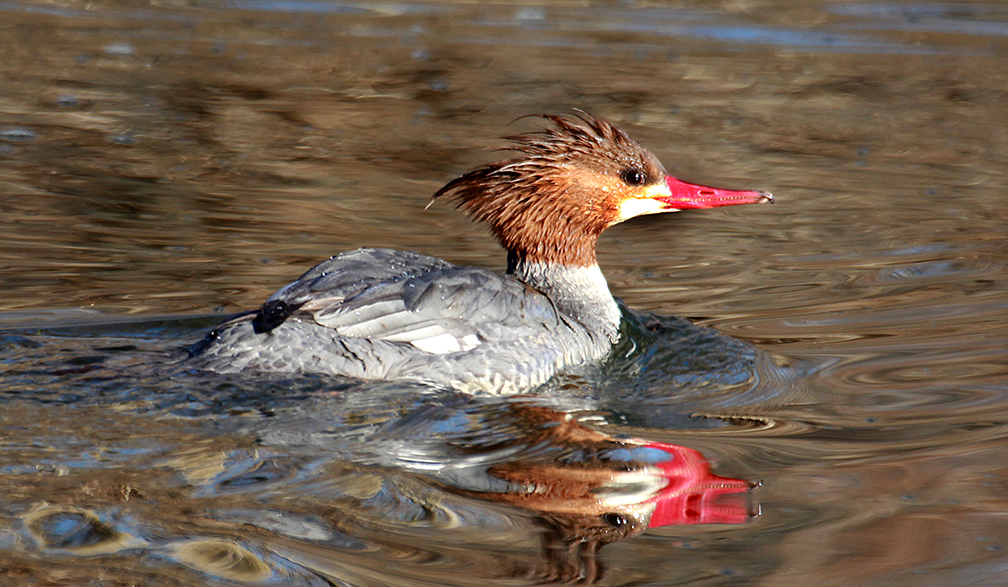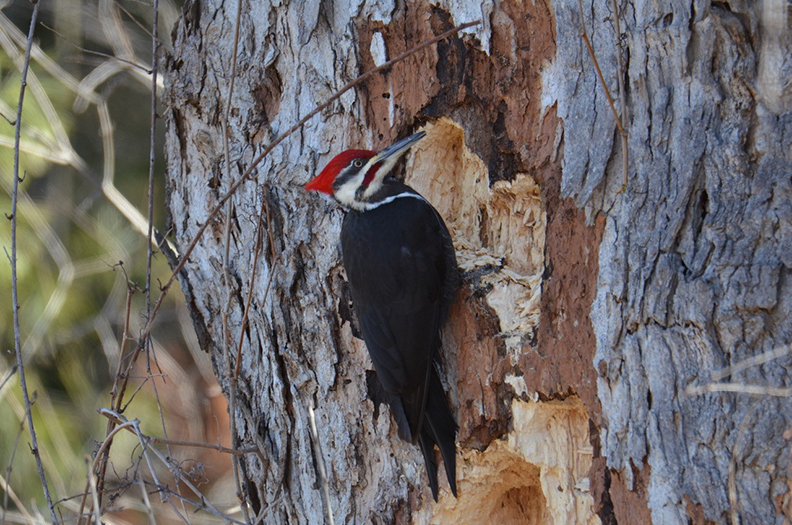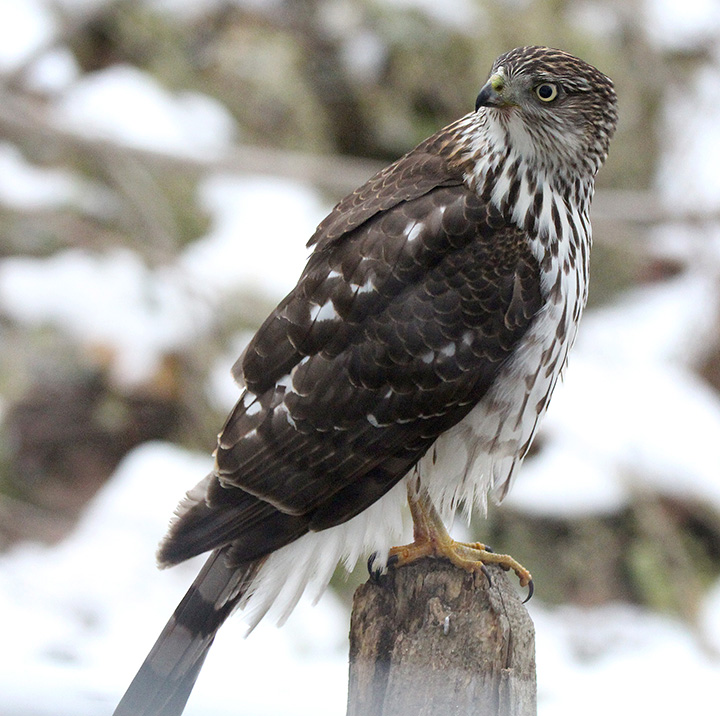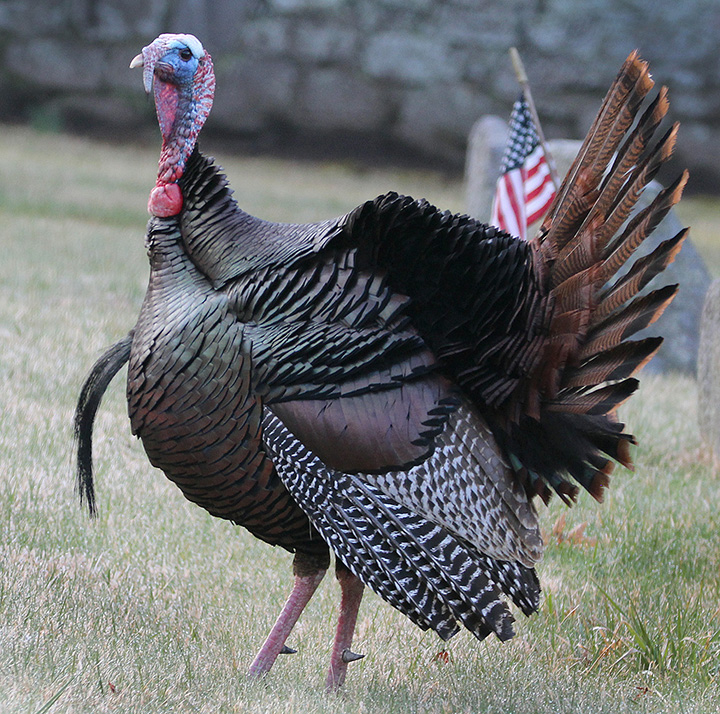November Birdwatching

PHOTO: A female common merganser swims in a pond in New England. Male common mergansers are white and black with dark green heads.

by Chris Bosak
Weirs Times Columnist
The recent stretch of beautiful weather aside, November can be a tough month for birdwatchers.
Frigid temperatures, cold rain and even some snow has many of us longing for the more pleasing fall weather of September and October. Most of the migrants, such as hawks and songbirds, are gone by November. The last of the leaves have fallen off the trees, except for a few hangers-on, erasing most of the color from the landscape. With most of the flowers long gone already too, brownish-gray tree trunks and dark green foliage of evergreens dominate the landscape.
Birders, however, are eternal optimists and always find bright spots. For me, November means that the waterfowl migration has begun in earnest. It starts slowly in October and hits its stride in November. Ducks, as I have written for years, are my favorite type of bird to watch, so I never dread November.
My first duck migration sighting of the year came a few weeks ago when I spotted four male hooded mergansers swimming away from the shoreline as I approached a neighborhood pond. It was a beautiful thing to see and the first of many similar sightings that will occur for the next several months.
I received an email last week from Amy, who wrote that she had seen a flock of more than 70 common mergansers on Childs Bog in Harrisville.
Common mergansers often form huge flocks and may be seen throughout late fall and winter on our lakes and large ponds. Smaller flocks and individual mergansers are often seen as well, including on smaller ponds and rivers.
The merganser family, which also includes the red-breasted merganser, is an interesting family to study in New England. They are divers, meaning they dive underwater for their food as opposed to dabbling, and they have serrated bills to keep the food from slipping away as they surface.
Mergansers, especially common mergansers, are extremely wary, at least in my experience. Occasionally, I have come across a slightly less timid hooded merganser, but I am yet to find a common merganser that is not ultra-wary.
Of course, the merganser family just scratches the surface of all the ducks we will see passing through New England for the next several months. Bodies of fresh water will attract a different variety than salt water. There are some species that will readily go to fresh, brackish or salt water, but many species have a preference. Loons are interesting in that they breed on large freshwater bodies of water, but are mostly found on salt or brackish water in the winter. Long Island Sound off the coast of Rhode Island and Connecticut is an excellent place to find common and red-throated loons in the winter. They are not the flashy birds that they are in the summer, but rather a much more dull-colored version of themselves. They are still a thrill to see regardless of what plumage they are sporting.
With the duck season just picking up pace now, there will be plenty to write about in the next several months. I look forward to sharing my experiences. As always, feel free to drop me a line and let me know what you are seeing as well.
Chris Bosak may be reached at chrisbosak26@gmail.com or through his website www.birdsofnewengland.com



